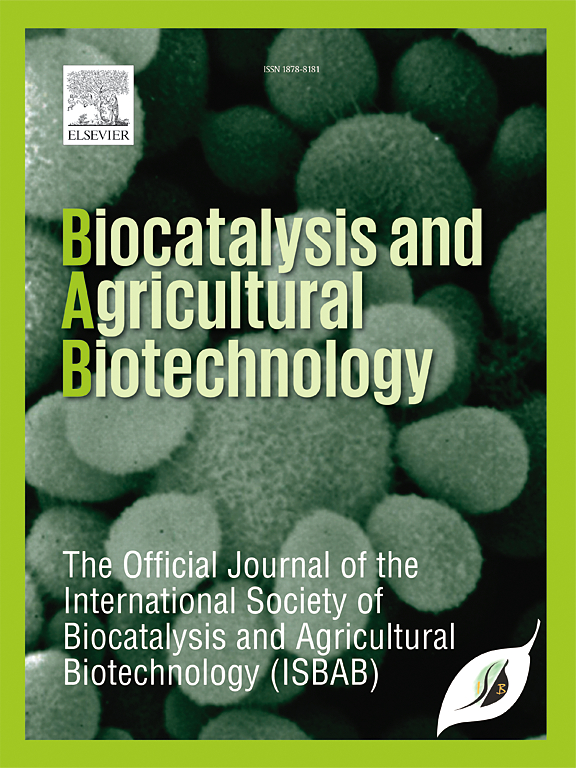Bioconversion of oil palm empty fruit bunches waste into prebiotic xylooligosaccharides using a genetic modified cross-linked endoxylanase aggregates immobilization
IF 3.4
Q2 BIOTECHNOLOGY & APPLIED MICROBIOLOGY
引用次数: 0
Abstract
Recent progress has been achieved towards more environmentally friendly and productive approaches using xylanolytic enzyme in producing prebiotic xylooligosaccharides (XOS) from inexpensive lignocellulosic biowaste. The cost of hydrolyzing XOS from appropriate materials high in xylan and the lack of xylanase enzyme activity after several treatment cycles are among the most pressing problems faced by the industries. In this study, XOS was produced utilizing a cross-linked mutated endoxylanase aggregates (CLmXynA) immobilization from an oil palm empty fruit bunches (OPEFB) waste. OPEFB was pretreated using sodium hydroxide-peracetic acid two-stage process which successfully removed 61.1% of lignin and 78.4% of extractives. From 28.4% of hemicellulose recovered, the highest hydrolysis activity (19.3%) was optimized using one-factor at one time approach where a total of 11.01 mg/g of XOS was produced. X3 (70.5%) was shown to be a major product meanwhile, this study presented longer XOS oligomers (X4 = 5.1% and X5 = 6.1%) hydrolyzed compared to a common major of X2 and X3 from a previous report. Moreover, CLmXynA maintained 29% of its initial XOS hydrolysis after five cycles, each of 48 h of reaction and depicted 1.6-fold higher activation energy (33.1 kJ mol−1 K−1) than its apparent kinetic model when the heterogenous kinetic hydrolysis were assessed using a modified Prout-Tompkin equation. As a conclusion, immobilized CLmXynA shown to be an efficient and stable biocatalyst while OPEFB which is a markedly large agriculture biowaste produced especially in Southeast Asia demonstrated a promise alternative of low-cost natural substrate for XOS production as a valuable prebiotic.

求助全文
约1分钟内获得全文
求助全文
来源期刊

Biocatalysis and agricultural biotechnology
Agricultural and Biological Sciences-Agronomy and Crop Science
CiteScore
7.70
自引率
2.50%
发文量
308
审稿时长
48 days
期刊介绍:
Biocatalysis and Agricultural Biotechnology is the official journal of the International Society of Biocatalysis and Agricultural Biotechnology (ISBAB). The journal publishes high quality articles especially in the science and technology of biocatalysis, bioprocesses, agricultural biotechnology, biomedical biotechnology, and, if appropriate, from other related areas of biotechnology. The journal will publish peer-reviewed basic and applied research papers, authoritative reviews, and feature articles. The scope of the journal encompasses the research, industrial, and commercial aspects of biotechnology, including the areas of: biocatalysis; bioprocesses; food and agriculture; genetic engineering; molecular biology; healthcare and pharmaceuticals; biofuels; genomics; nanotechnology; environment and biodiversity; and bioremediation.
 求助内容:
求助内容: 应助结果提醒方式:
应助结果提醒方式:


